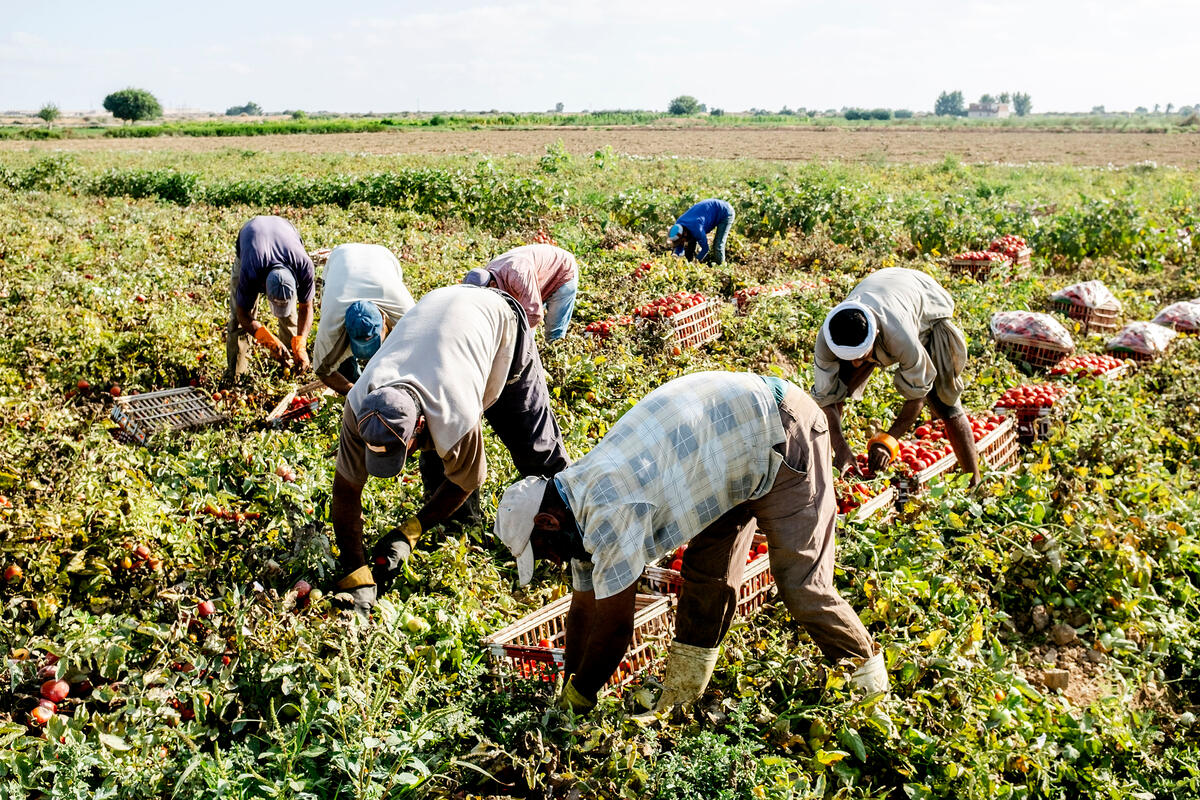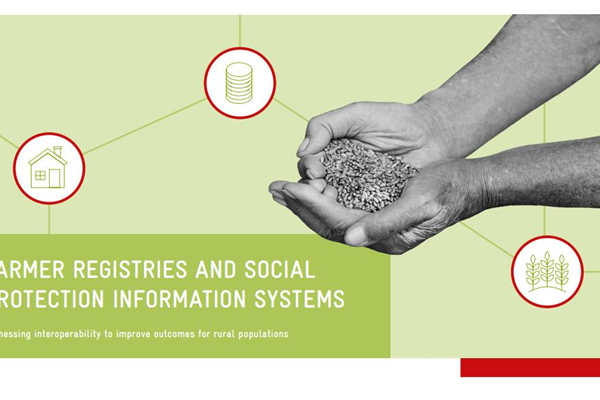The agricultural and social protection sectors speak to each other: Country experiences on farmer and social registries
Q&A with representatives from Lebanon, Jordan and Morocco

Labourers harvesting tomatoes in Egypt.
©FAO/Heba Khamis
What happens when the agriculture and social protection sectors move beyond working in silos and start sharing data, insights, and priorities? The result is more coherent policies, stronger institutional coordination, and expanded social protection coverage for rural populations.
By linking farmer registries with social protection information systems, governments can improve the identification, delivery and monitoring of agricultural and social policies focused on small-scale farmers. This interoperability also strengthens inclusive climate action by better reaching vulnerable communities and responding to their needs.
Around the world, countries are tapping into this potential. The Food and Agriculture Organization of the United Nations (FAO), together with partners, has made this integration a central focus of its work on social protection. The Organization assists in strengthening collaboration between ministries of Agriculture and Social Protection, promotes standardized protocols for the reliable use of registry data, and provides training to authorities on design and implementation.
At a recent FAO event, government representatives from Lebanon, Jordan, and Morocco shared how this integration is advancing in their countries, offering practical insights and lessons learned.
The panel featured Faress Yahya, Head of the Farmers´ Social Protection Division at Morocco’s Ministry of Agriculture; Rima El Hajjar, Head of Economic and Marketing Service and Focal Point for Farmers' Registry at Lebanon´s Ministry of Agriculture, and Khalid Al Heesa, Secretary General Assistant for Projects and Rural Development at Jordan´s Ministry of Agriculture.
Keep reading to discover their main takeaways from their discussions. For a deeper dive, stay connected, as their experiences will be included in a forthcoming publication that takes stock of farmer registries in the Near East and North Africa (NENA), exploring their implications for extending social protection to rural populations, supporting job formalization, and contributing to poverty reduction.
_______________________________________________________________________________
Why was the farmer registry established in your country, and how does it work in practice? How is it connected to broader government policies?
Faress Yahya: In Morocco, major transformations in agriculture have taken place since 2008 and 2020, guided by strategies like the Green Morocco Plan and the Green Generation. At the same time, we are undergoing a major reform to expand access to social protection nationwide. Within this context, we have developed the Registre Agricole Nationale, which helps us identify vulnerable farmers and connect them to services. We have built a strong legal framework that defines the registry’s objectives and ensures alignment with our social protection reforms.
Rima El Hajjar: Our goal in Lebanon was to create a sustainable, dynamic database to support evidence-based policymaking and ensure the fair distribution of support. The registry aims to improve farmers’ livelihoods, including access to social protection. It started as a pilot and became a national system in 2021 with the support of FAO and the European Union, with registrations beginning in 2023. So far, about 48 000 individuals have registered. We are currently working on related legislation.
Khalid Al Heesa: In Jordan, data was very limited, particularly in rural areas. Like other countries in the region, informality in agriculture has been a major barrier. With support from FAO and the European Union, we created an integrated digital system to centralize data for policy planning. It covers household, crop, and livestock data, covering both Jordanians and non-Jordanians, including refugees. We use GPS and tablets to collect real-time data and verify land aspects. The system is linked to different ministries for data cross-checking and validation.
To what extent is your registry linked to social protection systems or policies? What kind of support is needed to strengthen these links?
Faress Yahya: Our registry is directly connected to the national social protection policy. It includes data on smallholder farmers, helping us understand their land size, revenue, eligibility for support and capacity to contribute. This allows for better classification and targeting. However, infrastructure and administrative capacity remain challenges. We still have work to do to make the system more inclusive and resilient.
Rima El Hajjar: We are trying to connect the registry to the Ministry of Social Affairs so that farmers can receive identification cards with unique identifiers. This is a first step toward formalizing their status and integrating them into social insurance. We are also working with other ministries to provide documented work permits for agricultural workers. We are not including non-nationals in our registry yet. For now, our focus is on Lebanese farmers.
Khalid Al Heesa: Our registry combines data from different sectors. Currently, we have about 120,000 individuals and 70 000 agricultural holdings registered. The main challenge now is maintaining and updating the data. We are working to give local authorities access to modify records and improve governance. Continued international support is essential to scale and sustain the system.

